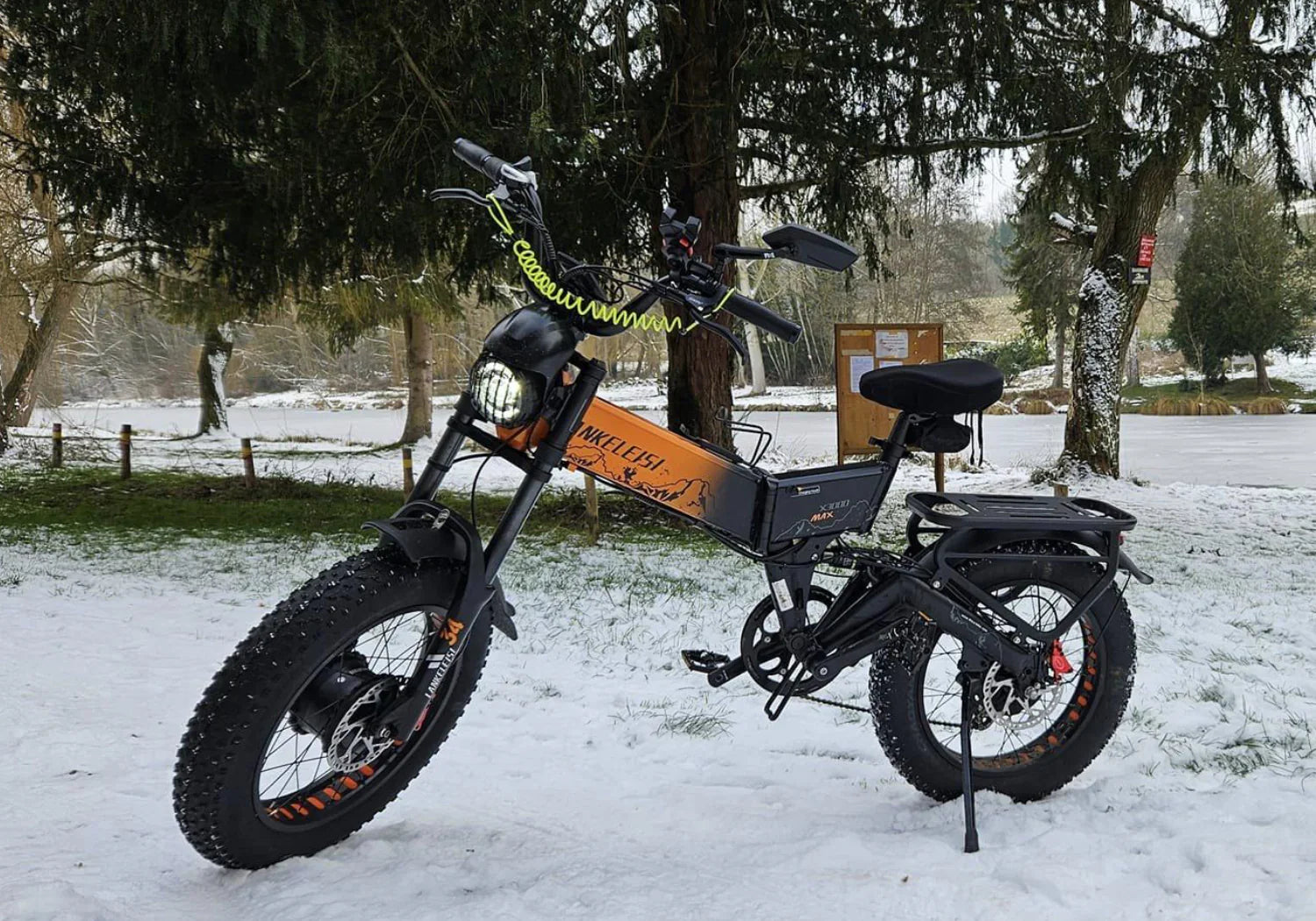With the arrival of winter in Europe, the climate becomes colder and wetter, especially in December, when low temperatures, snowfall, and frost often prevent cyclists from going out. Electric bikes can then remain unused for some time. If the batteries are not stored properly, their performance and lifespan can be affected. Therefore, it is essential to take appropriate measures for their storage and maintenance during this period. This article provides practical advice on how to properly store an electric bike and protect its battery when not in use during the winter.
Why do temperature variations affect battery performance?
Lankeleisi electric bikes use lithium batteries, and when winter comes, the electrolyte inside the battery becomes viscous, the active substances inside the battery lose their vigor, the electrochemical reaction slows down, the internal resistance increases, and the battery capacity decreases significantly. When the temperature drops to 0°C, the battery capacity is only 60% of that of summer. The lower the temperature, the more the battery capacity is reduced.
Additionally, low temperatures in winter not only affect battery capacity but also its charging efficiency. Lankeleisi recommends not recharging the battery after it is completely discharged, as this may prevent proper charging at low temperatures. We recommend charging the battery indoors at a temperature of 20-25°C to ensure optimal charging.
So, if you plan not to use your bike for a long period during the winter, Lankeleisi recommends that you take effective measures to protect the electric bike battery .
How to store an electric bike that won't be used for a long time?
Where you store your e-bike is crucial, both in winter and in everyday situations. A proper storage environment will prevent battery damage and extend the overall lifespan of your e-bike. Our technicians recommend storing your e-bike in a dry, well-ventilated area, away from moisture and direct sunlight, and keeping the battery at a temperature of 20-25°C. This prevents the battery from going into cryoprotection, which could prevent proper charging.
AVOID DIRECT SUN EXPOSURE: The e-bike battery and frame should not be exposed to the sun for extended periods. The intense heat of the sun accelerates battery aging and can even cause overheating, affecting its performance and safety.
AVOID DAMP ENVIRONMENTS: Damp environments can easily cause battery short circuits and damage electrical components. When storing your e-bike, make sure it is placed in a dry, well-ventilated area.
TIP: If you're in a colder region, make sure your bike isn't exposed to extremely low temperatures while in storage. While most e-bike batteries are resistant to low temperatures, extreme temperatures can still affect their performance. Therefore, it's best to store your e-bike in a warm place (between 20°C and 25°C).
How to protect the battery during a long period of disuse?
1. Charge the battery once a week.
Winter is the season when e-bike batteries tend to deteriorate, especially if you don't ride for a long time. If you plan to deactivate your e-bike during the winter, usually for about three months, it is necessary to recharge it at least 12 times or more. Charging it once a week can effectively activate the battery and prevent it from aging or degrading due to a long period without recharging. It is enough to charge the battery to 70% each time.
Recommended Reading: How Long Does It Take to Charge an Electric Bike Battery
2. Discharge the battery regularly (also once a week).
Even if you don't use your e-bike for a long time during the winter, it's important to deep discharge the battery regularly. It's recommended to do this once a week, which will activate the battery and ensure that the battery's activating substances remain active. This will help extend the battery's lifespan and prevent sulfation.
How to deep discharge the e-bike without riding? You can use the bike's kickstand, tilt the bike so the rear wheel remains suspended, turn on the computer, and use the throttle to spin the rear wheel to drain the battery. This is a simple and effective method for keeping the battery active. Remember not to over-discharge the battery to avoid completely draining it and making it impossible to recharge.
Maintain the battery at a proper charge level
Regularly charging and discharging the battery once a week, while maintaining the charge level between 40% and 60%, helps prevent overcharging and overdischarging, reducing battery performance degradation due to cold temperatures. In addition, this practice ensures that the battery remains active during extended storage, thus preventing the aging or deactivation of the battery's internal chemicals, and significantly extends the battery's life and stability.
Check the battery regularly
Regularly checking your e-bike battery helps ensure its safety, performance, and longevity. During the inspection, you can pay attention to the battery's appearance, check for obvious damage or swelling, whether the battery discharge port is loose, whether the battery is charging normally, and whether the battery has leakage problems. Regular inspections can help you detect problems in time. If your battery has any of the above-mentioned problems, you can immediately report them to our after-sales service. Lankeleisi technicians will provide professional advice to help you resolve the problem, helping you avoid the inconvenience of riding and safety risks caused by battery problems.
Conclusion
In winter, the e-bike battery is easily affected by low temperatures and long periods of inactivity, which can lead to performance degradation or premature aging, thus reducing its lifespan. To effectively protect the battery and extend its lifespan, it is recommended to store it in a dry and warm environment (ideally between 20°C and 25°C), and to charge and discharge it regularly, once a week being recommended, to maintain the charge level between 40% and 60%.
Additionally, regularly check the battery's appearance and connections to ensure its safety. By taking these simple and effective steps, you can ensure your Lankeleisi e-bike battery will perform well during the winter months and be ready to resume your riding adventures as soon as the temperatures warm up.







